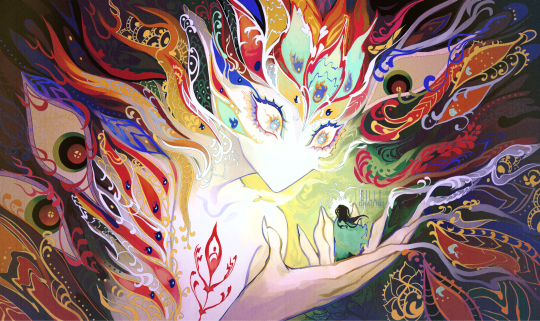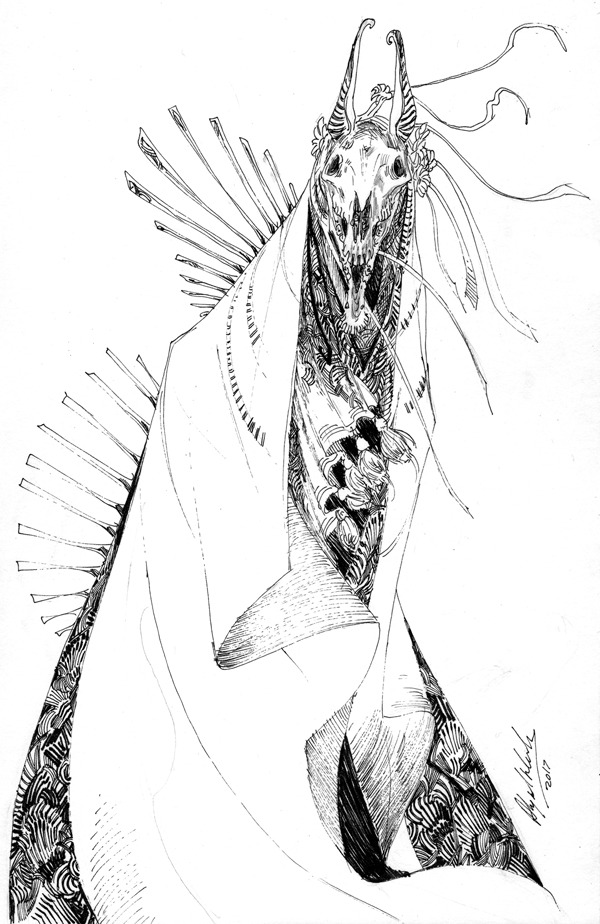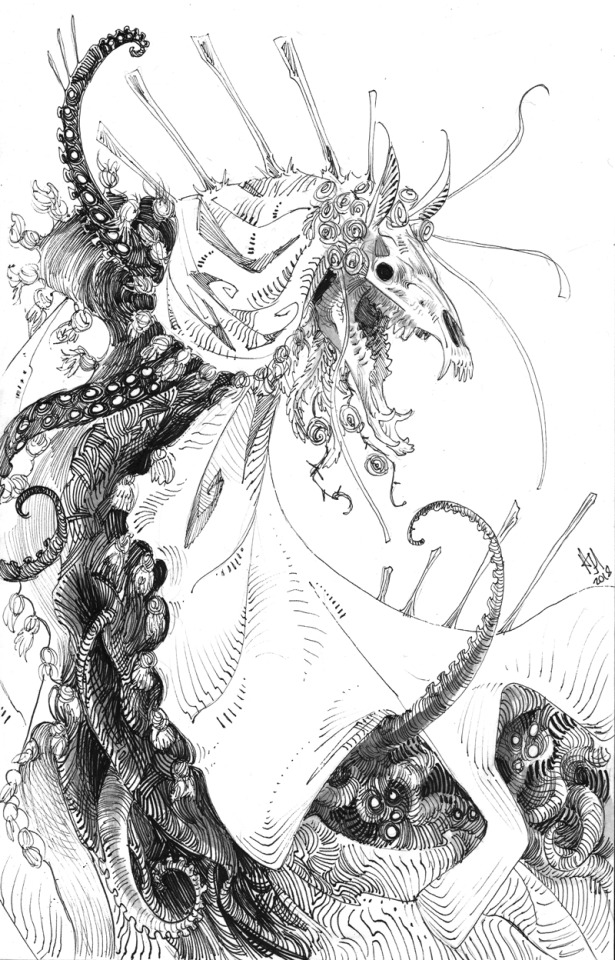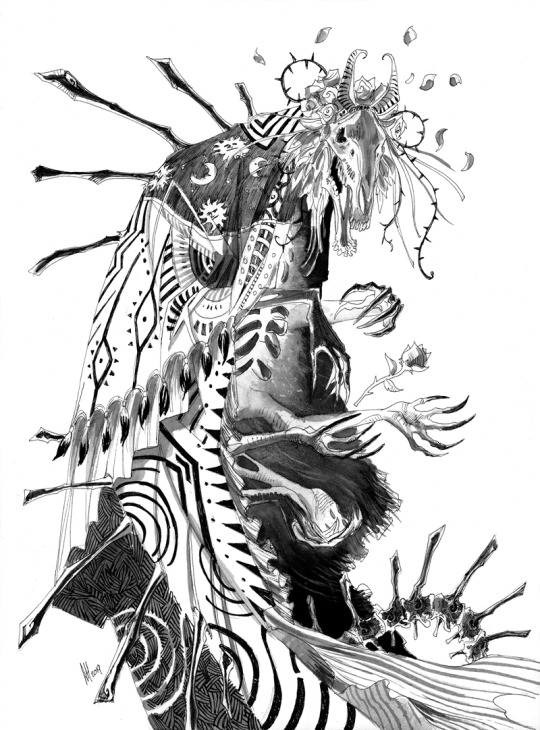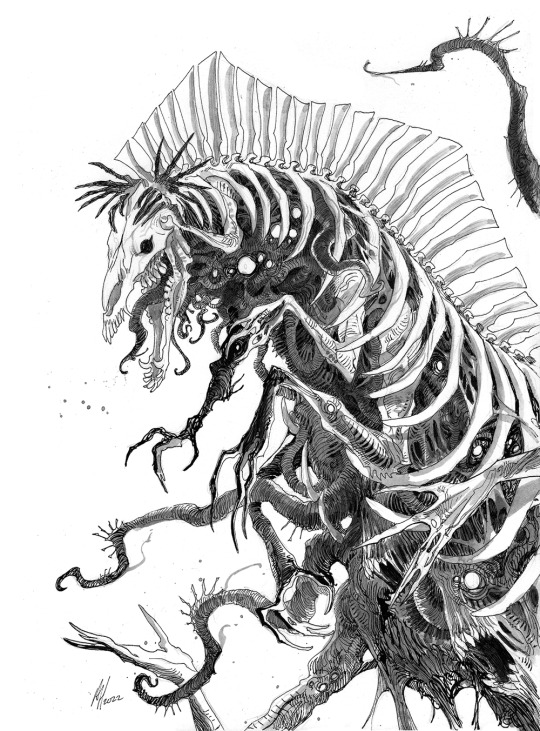Don't wanna be here? Send us removal request.
Photo

Every third night, at the witching hour, it crosses the fields by the radio tower.
23K notes
·
View notes
Photo
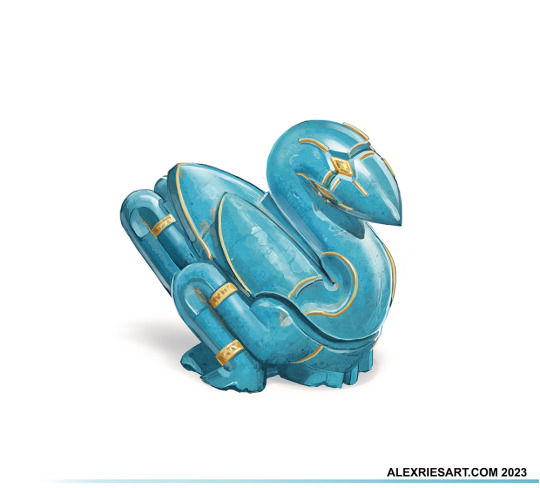
A small stone birrin figure found in the ashes of a sacked mining camp, along with some other… curiosities. For the book project Two Sky River.
1K notes
·
View notes
Text
Indosinosuchus the freshwater Teleosaur
Ignoring the fact that I skipped out on posting about my recent deepdives on Armadillosuchus and Odobenocetops (besides that one figure I made) on Tumblr, let me catch up by talking about Indosinosuchus.

Indosinosuchus (Indochinese Crocodile, after the Indochinese Tectonic Block) is a type of teleosaurid from the Late Jurassic Phu Kradung Formation of China. First of all the Phu Kradung is a fascinating formation with a long and somewhat convoluted dating history. For quite some time researchers argued whether or not its Late Jurassic (based on fauna) or Early Cretaceous (based on pollen). Recent papers seem to argue that both can be true, with the lower parts being Jurassic and the upper Cretaceous, which also accounts for a faunal turnover visible throughout the record. Related to Indosinosuchus, we have classically Jurassic teleosaurs in the lower levels and pholidosaurids in the upper.
artwork by Kmonvish Lawan and Sakka Weerataweemat


Whats far more interesting however is that the Phu Kradung Formation is continental in nature, preserving floodplanes dominated by lakes and rivers. This is quite the unusual habitat for a teleosaur, which are traditionally marine animals, living in the coastal or even open waters of the Tethys. In fact the only other known example of a freshwater teleosaur is an unnamed animal from China that sometimes clades closely to Indosinosuchus.
Indosinosuchus is known from a total of 10 fossil individuals, largely consistsing of skulls and mandibles with the occasional postcrania, which were all found in a single locality and have been determined to represent at least two different species: I. potamosiamensis (Thai River Indochinese Crocodile) and I. kalasinensis (Indochinese Crocodile from the Kala Province).
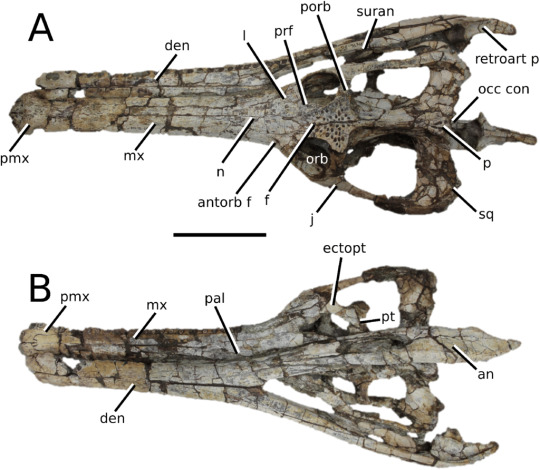
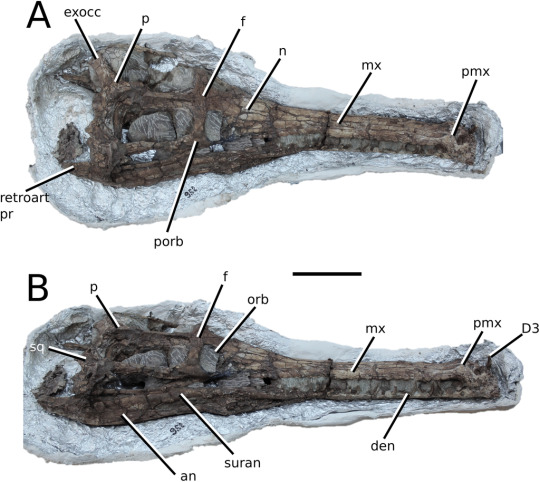
Now overall, Indosinosuchus had a pretty long and narrow snout compared to most modern crocodilians. However, among teleosaurs, this animal was actually among the more robust genera. Even more so when you consider that within teleosaurs, it falls within the teleosaurid family, not the overall more robust machimosaurids that would eventually become durophages and macropredators, cracking turtle shells.
Analysing the biomechanics of Indosinosuchus did show some cool things. The snout was pretty average at resisting stress and force, at least for teleosaurs, but the bite force was respectably high. The force that could be transferred to the tip of the snout in particular is among the highest in this group and the maximum force it could excert was the single highest among all teleosaurs.
The two species however begin to differ in how fast they could close its jaws. I. potamosiamensis follows what would be expected. A teleosaur with a massive bite but only closing its jaws slowly as in teleosaurs with similar mechanical advantage values. I. kalasinesis however could close its jaws surprisingly fast, something you'd otherwise expect from animals with a much lower bite force that needed to strike a lot more swiftly in order to catch prey.
While we don't quite know the precise ecology of the two species, scientists could deduce a few things. For one, obviously the difference in the jaw closing/opening speed is a good sign that they had somewhat different lifestyles, which could explain why two so similar species coexisted at the same time in the same place. Secondly, although its bite force was notably high, it does not appear like Indosinosuchus went after especially large prey. Sure, it could bite hard and had a relatively robust rostrum, but its teeth were not particularily specialised like in Machimosaurus. So it has been suggested that it was a generalist, not a specialist as shown in this figure by Johnson, Young and Brusatte.
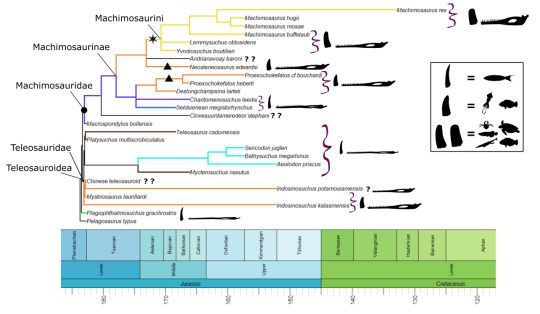
Last but certainly not least is the way these animals died. It does seem rather odd that 10 specimens all seemingly died in the same place at the same time, with most preserving the skull and not much else. Well there may be a reason. One clue stems from the most complete non-skull we have, which is a remarkably well preserved spinal column preserved in articulation, but missing the skull. So the idea is that the carcass may have floated in rather still waters (like an oxbow lake) and the weight of the head would eventually separate the two pieces. The spine must have been burried rather quickly afterwards so that it wouldn't just fall apart. Well the hypothesis continues that this could have been during a drought, when water levels were gradually receeding. We know that modern crocodiles will amass in great numbers during droughts until bodies of waters are nothing but mud and crocs, so it makes sense here. The full drying out of their sanctuary would then contribute to preservation and we even have evidence that they spend a minimum of 8 weeks in the dry thanks to the feeding traces of scavenging beetle larvae.
There is also a second hypothesis that suggests that the bodies may have been washed on land during a flashflood, but I personally think the drought hypothesis is a lot more interesting. Plus I managed to get @knuppitalism-with-ue to draw something akin to the later, with an unfortunate group of Indosinosuchus being stuck in a dried up lakebed as a local mamenchisaur approaches in the search for water.
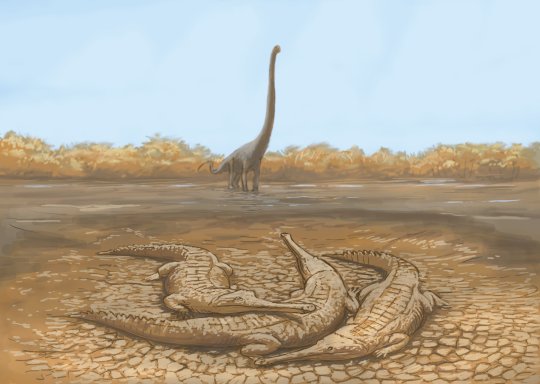
Obligatory link to the Wikipedia page post-overhaul: Indosinosuchus - Wikipedia and the before and after, wondering if I should do the same with Armadillosuchus and Odobenocetops or if I should just come back once I got the next project done (Doratodon)
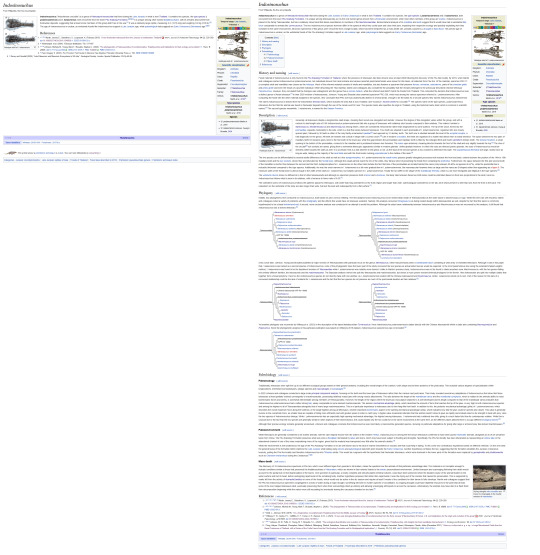
33 notes
·
View notes
Photo
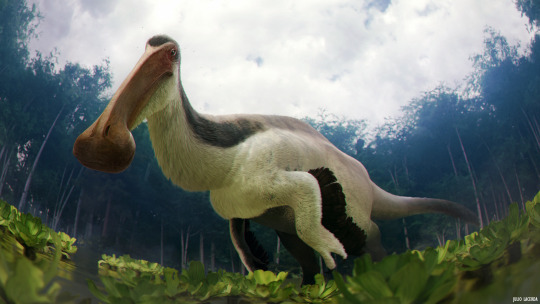
POV: you’re a mongolian aquatic plant circa 70 mya
Patreon • Ko-fi • Facebook • Twitter • Prints & Merch
3K notes
·
View notes
Text
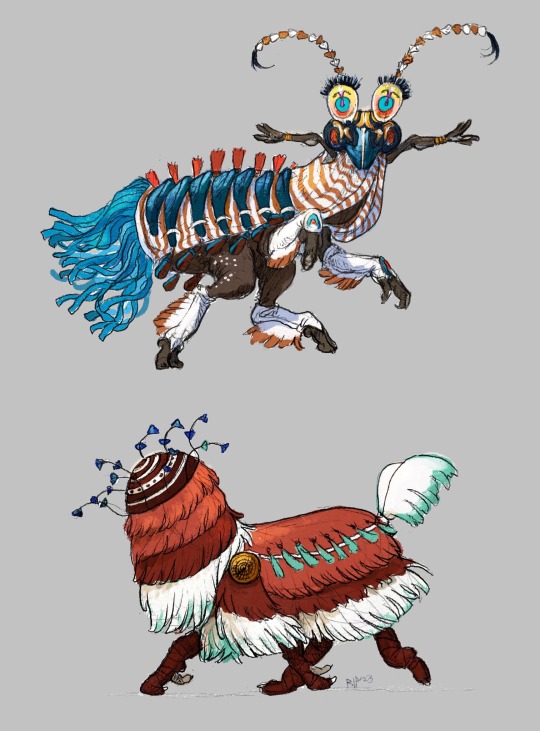
Two different folk costumes; one scares away spirits, one invites them to possess the wearer
2K notes
·
View notes
Text
63K notes
·
View notes
Photo

The rest of the thread is here.
tl;dr: Don’t monetize AO3, kids. You won’t like what happens next.
88K notes
·
View notes
Photo

The Shadow of the Sun: one of my first artworks to break through online.
It shows a zero gravity environment of mysterious provenance, and I wish to tell its story as well, some day…
598 notes
·
View notes
Text
GIFT Disney+ stream (it should be possible to access via VPN)
youtube
*translation by @/marika_yuzu on Twitter below the cut
I just checked to see if I can log in to Disney+ Japan. After setting up my VPN (I use NordVPN - I recommend it), I opened an Incognito window in my Chrome browser (disneyplus.com/ja-jp) and logged into my already existing Disney+ account.
------------------------------
So, steps:
1. Subscribe to Disney+ in your own country (you can also subscribe after connecting to the VPN, but I prefer before)
2. Set up your VPN (connect to Japan)
3. Preferrably open an Incognito browser window - it should help ensure Disney+ sees your location as within Japan. Alternatively, you can also use a normal browser window, but make sure to logout from your local Disney+ account prior to connecting via VPN - otherwise, you may still see the content from your local Disney+ library
4. Access disneyplus.com/ja-jp - upper right corner is the log-in button
5. Insert your Disney+ account credentials: first e-mail then password
6. Once successfully logged in, this message should appear: "You are now travelling - content and ratings may differ from home" or smth like that.
7. Enjoy Disney+ JP
❗However, from past experience, Disney+ may, at some point, realize a VPN is being used, but I had that issue back when I was watching multiple episodes one after another. So, since GIFT is an uninterrupted stream, Disney+ should not figure out it's a VPN. Or, at least, shouldn't interefere until the stream is done.
Careful, though, the site may become very slow (doubtful it'll crash) as A LOT of people from all over the world are going to try and access the stream.
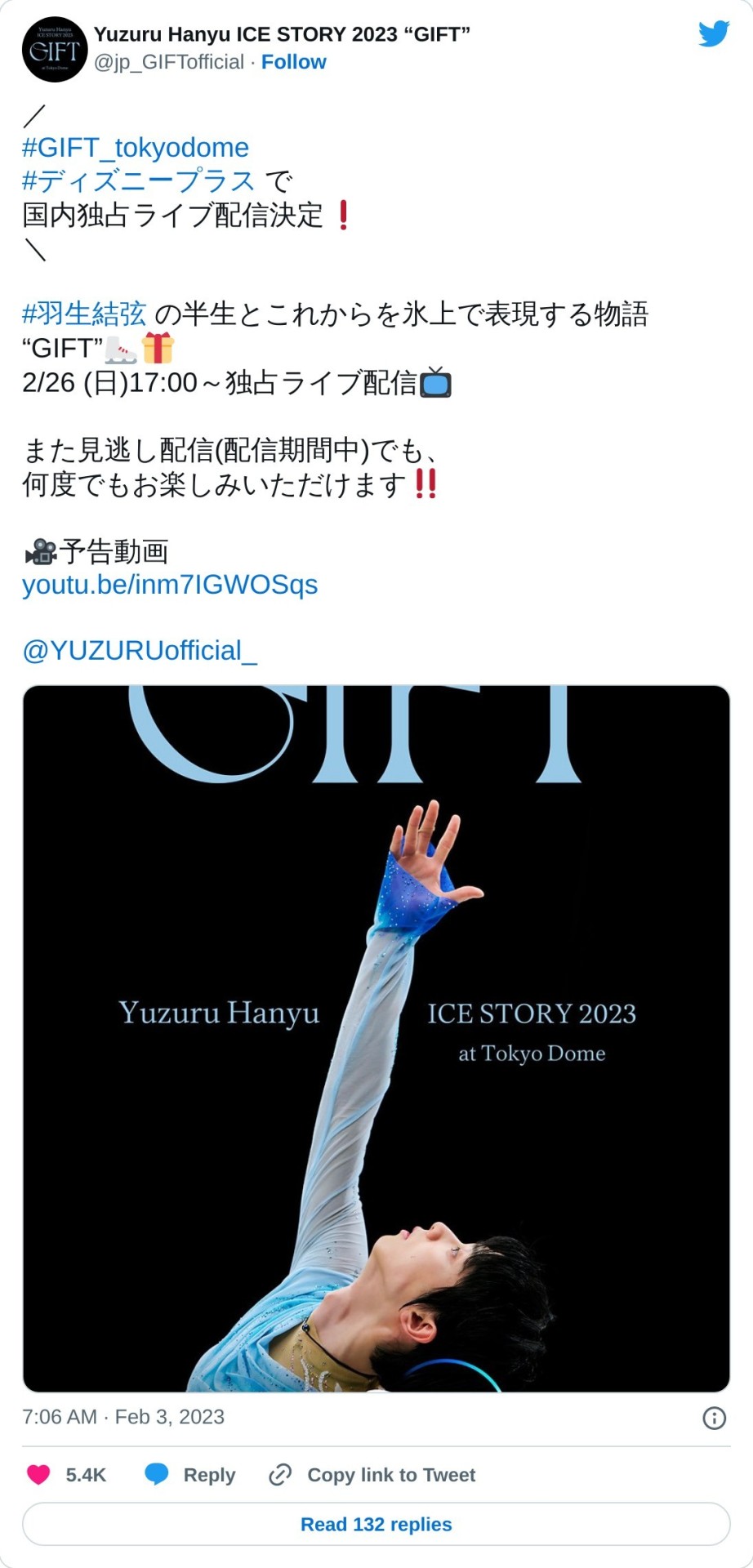
Cr. @/marika_yuzu
Comment from Yuzu: “I’ve been thinking about bringing a new form of skating to various people. I hope that this story of GIFT will reach you wherever you are. Together with all the thoughts, I will perform and fight till the end.”
81 notes
·
View notes
Text

I'm right-handed, so I draw from the left side.
If you can't see where you draw by hand, you can't draw the right lines😊
217 notes
·
View notes
Text
Yuzuru Hanyu's Senior FS Costumes
I. Origin 1.0 (Prince of Darkness)
Note: All the references (interviews, translations, etc.) used for this post are listed below the cut
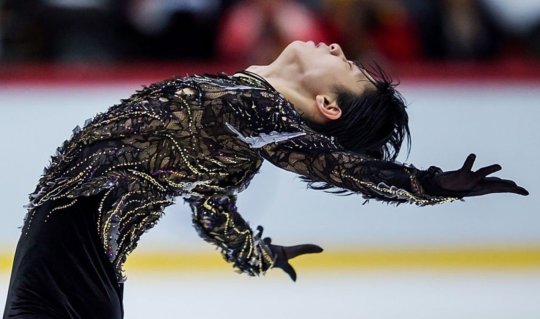
In the 2018-2019 season, Yuzuru Hanyu came to compete as the newly crowned double Olympic champion. He dedicated his short program (Otonal) to Johnny Weir and his free program (Origin) to Evgeni Plushenko, two skaters Yuzuru admired since childhood.
Origin 1.0 - the costume which has the aura of the Prince of Darkness, as described by Satomi Ito herself, the costume designer¹. I consider this one of the top iconic Yuzuru Hanyu costumes because it deviates from the usual brightly colored ones (think about the blue-based costumes, for example) and he embraces the dark. I do not mean dark as in only color, but also judging by the vibes. The only other costume I can think of as channeling dark(ness) is Masquerade.
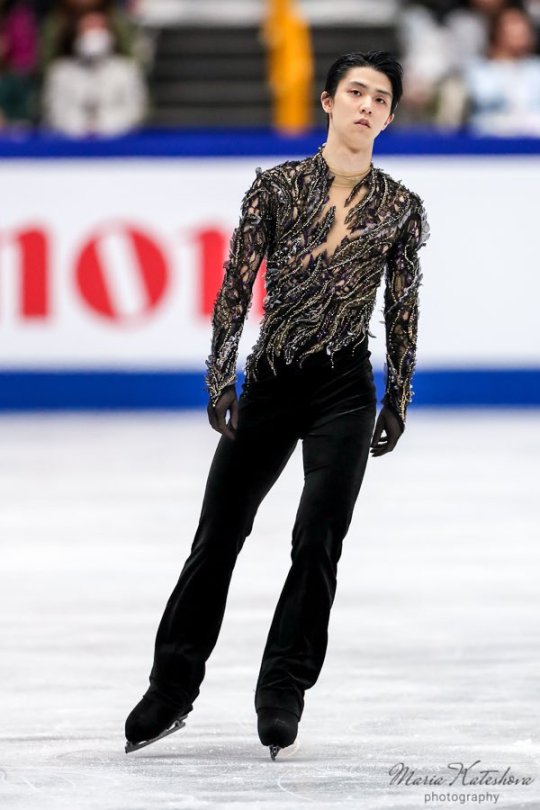

There is a striking contrast between the relaxed, skating around Yuzuru Hanyu and the competition mode ON Yuzuru Hanyu. The difference is made specifically by his expression. However, in both instances, the costume seems to create a barrier between him and the rest of the world. Origin 1.0, a black and gold lace-top paired with black velour pants, is the first competition costume worn by Yuzu after winning his second Olympic gold medal and I like to think this costume is made to emphasize that Yuzuru Hanyu is untouchable.
The base of the top is a skin-coloured fabric with overlaid black lace. On the front, the chest's jagged opening creates the illusion of feathers spreading protectively, a subtle dynamism enhanced by the diagonal, slightly winding fabric and golden details orientation. In contrast, on the upper back, the gold fabric follows the curve of the shoulder blades and ribcage, like an exoskeleton, while the lower back's lines are naturally flowing downwards, highlighting the waist. Here and there few dark-red beads can be noticed which confer depth and nuance to the costume.
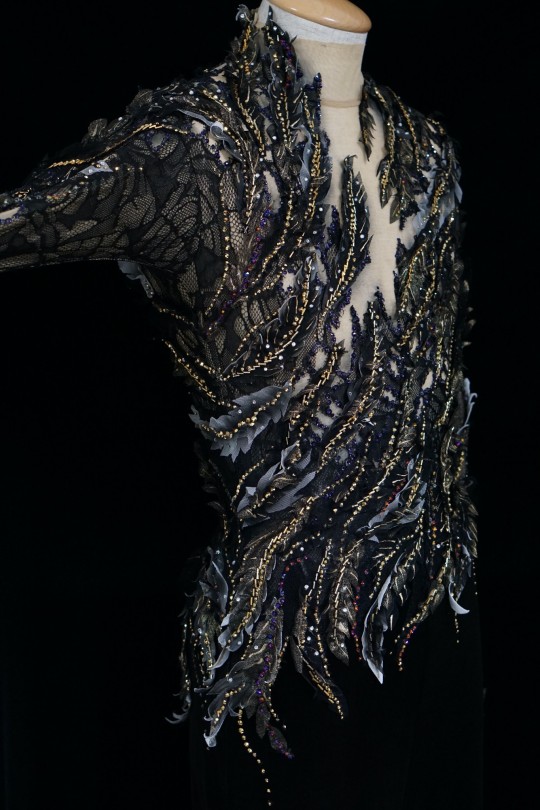

Origin 1.0 is based on Yuzuru's surname: 『The non-human born of feathers』². As such, the most important detail is represented by the feathers - around 100 handmade black and white feathers by Satomi Ito, applied manually, and the white ones airbrushed black in the middle to maintain the costume's cohesion. Another subtle detail lies in the purple rhinestones. They are seamlessly integrated within the costume so much so that these become noticeable only in close-up photos (see below).

Contributing to the depth of the costume are the purposefully ripped holes within the lace. Satomi Ito took to making those herself in the process of bringing Origin to life². The holes convey a subtle ragged look, of someone who has seen darkness and embraced it. They complement the entire look beautifully, adding to the Prince of Darkness theme.

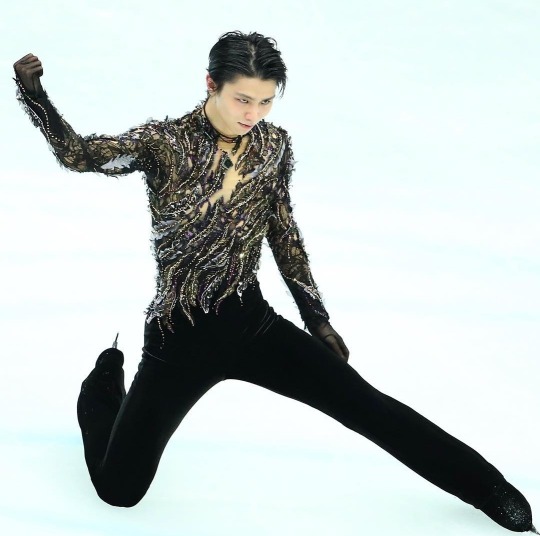
Origin 1.0 is one of those costumes made of multiple layers with various details applied without looking heavy or overly ornated. It maintains an apparently basic pattern while being full of hidden gems.

At the end of another 'incomplete' season (Yuzu injured his ankle during 2018 NHK's FS practice, winning the event despite it, but having to withdraw from GPF and Japan Nationals), Yuzuru commented in a post-Worlds 2019 interview that the black and gold costume was meant to be "accessorized" only with gold medals (paraphrased)³.
--------------------------------
Personally, I have been quite vocal on this blog about my undying love for the Origin sisters. They are in a constant battle to be my favourite.
Today, Origin 1.0 won for four reasons:
1) the theme is right up my alley
2) there is an easily found translation of an interview with Satomi Ito about the making of the costume (and I'm proud to say I understood the costume and the vision before reading the interview)
3) Yuzu won for the first time both of his GP assignments - he really was determined to have only gold associated with Origin 1.0.
4) 2019 Worlds Origin deserved the gold
1. Translation by @/marika_yuzu
2. "Figure Skating Fan" Magazine 2018-2019 『Born from feathers』 Translation
3. 53:57 YT video
84 notes
·
View notes
Photo

(via ztpr9zfkk38a1.jpg (JPEG Image, 850 × 857 pixels))
92K notes
·
View notes
Text








young sephiroth in the winter 2022 Ever Crisis trailer
380 notes
·
View notes

